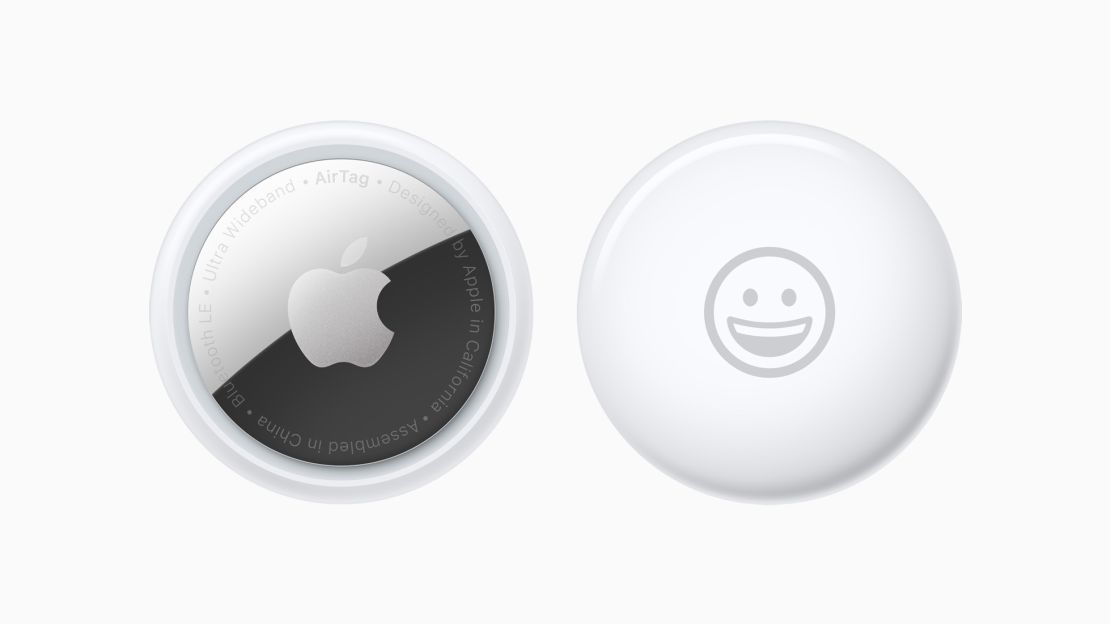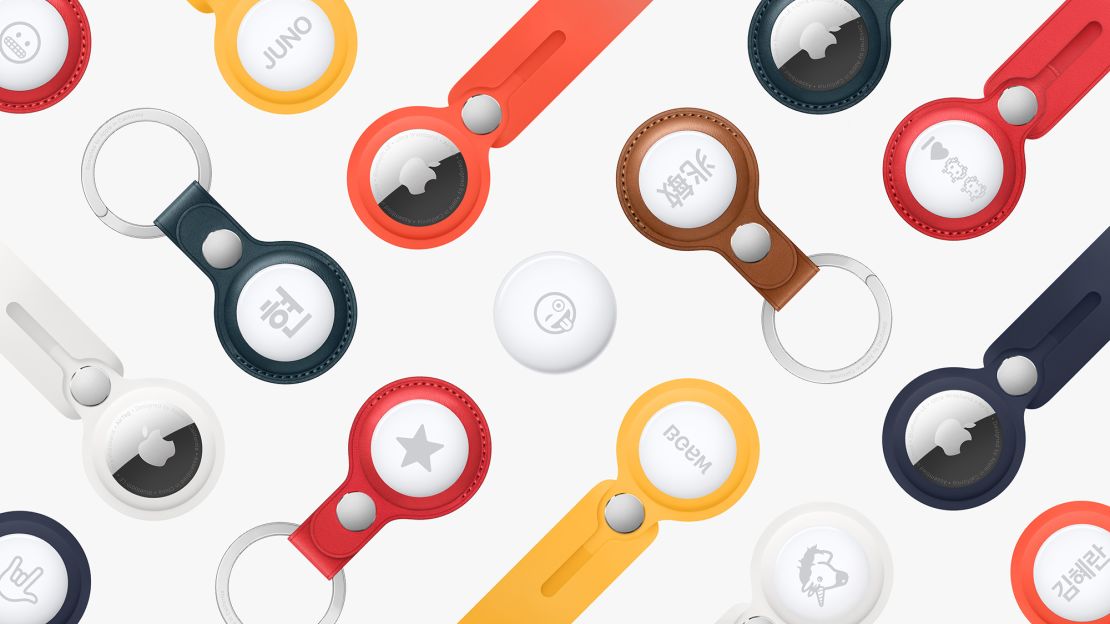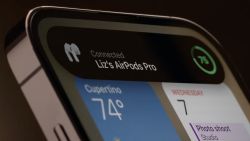When people think Apple, they think big ticket items like iPhones, MacBooks and iPads. But the company’s accessories line of iPhone cases, chargers and tablet keyboards is a critical part of its revenue growth strategy.
Now AirTag could be its next big accessory win.
An AirTag is a Tile-like Bluetooth locator that attaches to and helps you find items such as keys, wallets, laptops or even your car. The small, flat, circular disc with a powerful built-in chip will allow someone to locate items when connected to Apple’s Find My app and also work with Siri.
The stainless steel devices, which are water and dust resistant, feature a built-in speaker that plays sounds to better locate an AirTag. It’s packed with the Apple-designed U1 chip, which uses Ultra Wideband technology – the same chip used in the iPhone 12.
While location trackers are hardly new – there are similar products from Samsung, Sony and Tile – the U1 chip will allow it to more accurately determine the distance and direction to a lost item. It also works with augmented reality, showing an animation on the screen of the user’s iPhone or iPad when nearby.
AirTag has been reportedly in the works as far back as 2019, when pictures hidden within iOS 13 were discovered.

AirTag costs $29 for each or $99 for four, starting April 30. Users can also splurge for leather accessories, such as key rings, luggage tags and a bag charm from Hermès. Similar to Apple Watch, it’s possible to add free engraving to the device.
“Apple accessories are very important from a business perspective because they tend to be high-margin products,” said Ben Stanton, senior analyst at tech market research firm Canalys. “So while accessories may not make headlines from a revenue perspective, they do have a particularly positive impact on profitability.”
The arrival of AirTag will allow the company to expand its offerings and lock users deeper into its ecosystem as it looks for more ways to take on an expected decline in its hardware revenues. The iPhone continued to dominate Apple’s revenue in the fourth quarter of 2020, accounting for 59% of sales, compared to 12% for its accessories category, which also includes wearables and its Home line. However, the accessories category amounts to more revenue than its Mac line.
Still, Apple accessories remain a massive opportunity for upselling. Because Apple no longer includes a charger and cable in iPhone boxes upon purchase, demand for these items has surged in the past year. “Apple itself has seen supply shortages of charging accessories in some parts of the world, causing many customers and retailers to lean heavily on third-party alternatives,” said Stanton, citing anecdotes he’s heard from several distributors.

In addition, the company’s smart Magic Keyboard and the Apple Pencil opens up new revenue streams as lower-cost iPad users look for more functionality.
“Although AirTags are probably going to be fairly low priced, they may help to grow revenue, and users may buy multiple tags for different scenarios, such as for a bag, bike or car keys,” said David McQueen, director at tech market advisory firm, ABI Research. “It may also spark a rise in the manufacture of accessories to house the tags, such as a key fob, keychain or wrist strap.”
Customers who are delaying costly smartphone and tablet upgrades may be willing to spend more on lower cost items such as these.
It’s a smart time for their launch as customers are finally emerging from over a year of lockdown — ready, perhaps, to find things people invariably lose when outside the house.

























